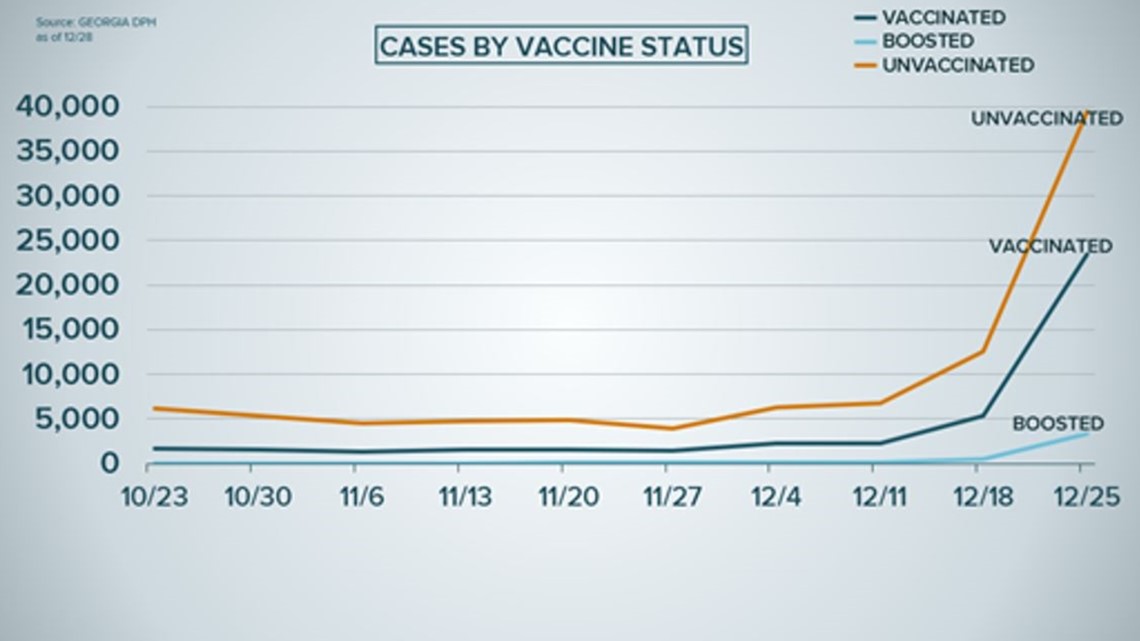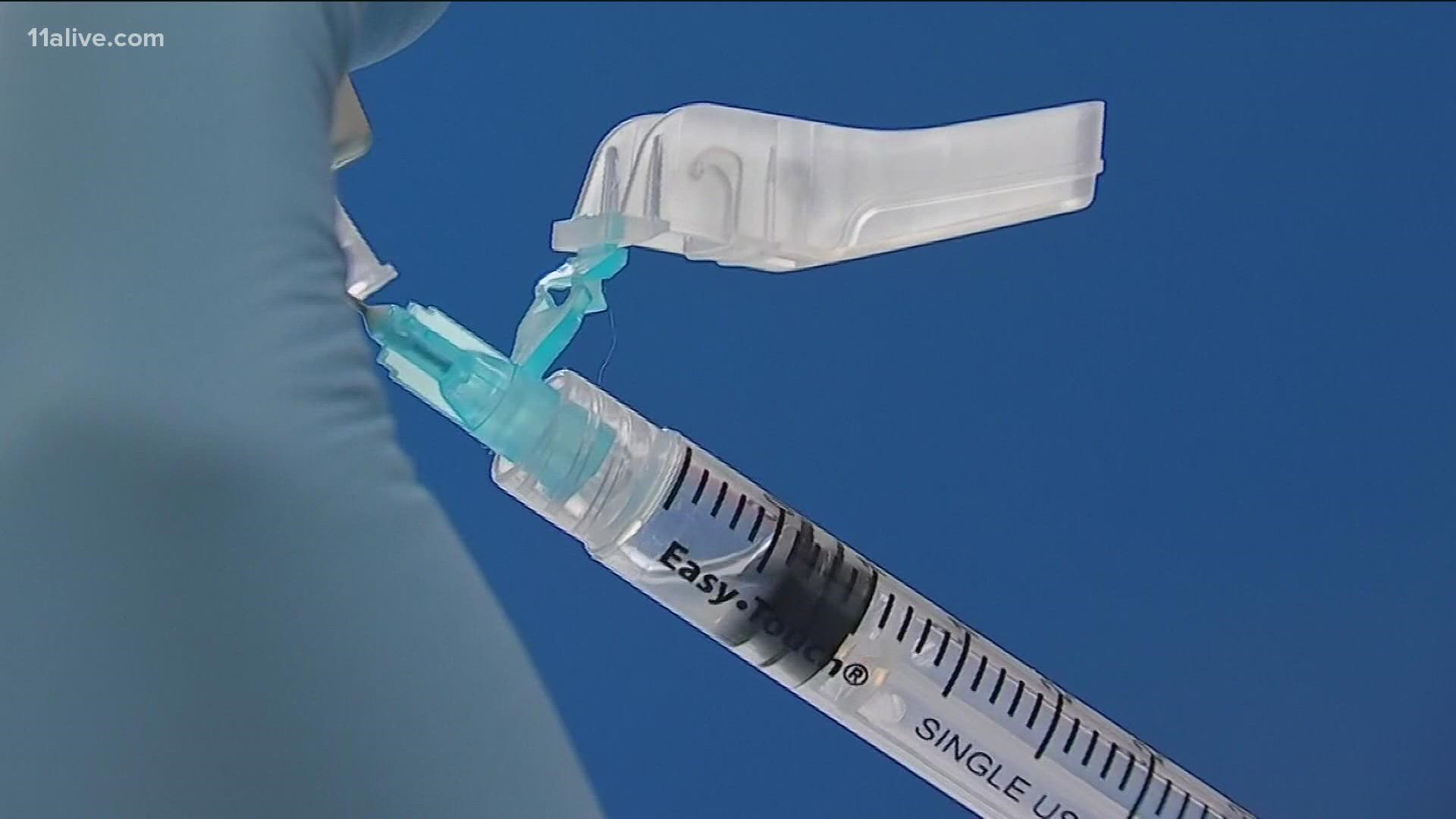ATLANTA — As omicron sends COVID numbers in Georgia skyrocketing, all that fresh data is pointing in the same direction on at least one matter: Boosters work, and they work well.
A record of Georgia Department of Public Health data going back through earlier this year and including when boosters first became available in early September show that as omicron has fueled the recent surge, a clear split has emerged in the outcomes for three groups of people: Those who are vaccinated and boosted, those who are only vaccinated, and those who are unvaccinated.
The data indicate that while cases have surged among both the unvaccinated and vaccinated - though, it's important to note, not equally - they have been substantially suppressed among the boosted.
The graph below shows the divergence.
According to state figures tracking through Christmas Day, people who have been boosted account for about 5% of Georgia's cases - even though they represent about 16% of the population.
By contrast, completely unvaccinated individuals make up about 40% of the population, but account for 60% of cases.
The remaining 44% of Georgians, who either received two doses but not a booster or one dose of a vaccine but not a second, account for 35% of cases.


Even more than with cases, the hospitalized population consists almost entirely of people who have not yet had a booster shot.
As with cases, the unvaccinated have spiked the most, even relative to their proportion of the population. The data up through Christmas Day indicated more than 70% of the state's COVID-19 hospitalizations were with people who weren't vaccinated, compared to a little more than 20% who were partly or fully vaccinated and less than 3% who had the additional booster shot.


One thing it's not yet clear with in terms of the data is how these different groups of people will fare in terms of mortality. So far, there has not been a divergence observed in terms of deaths - that comes with the caveat that data on reported deaths tends to lag, and in previous surges a clear sign of fatal outcomes has lagged, sometimes by as much as a month, behind the initial surge in cases and hospitalizations observed.
In Georgia, the surge did not begin until earlier this month.

